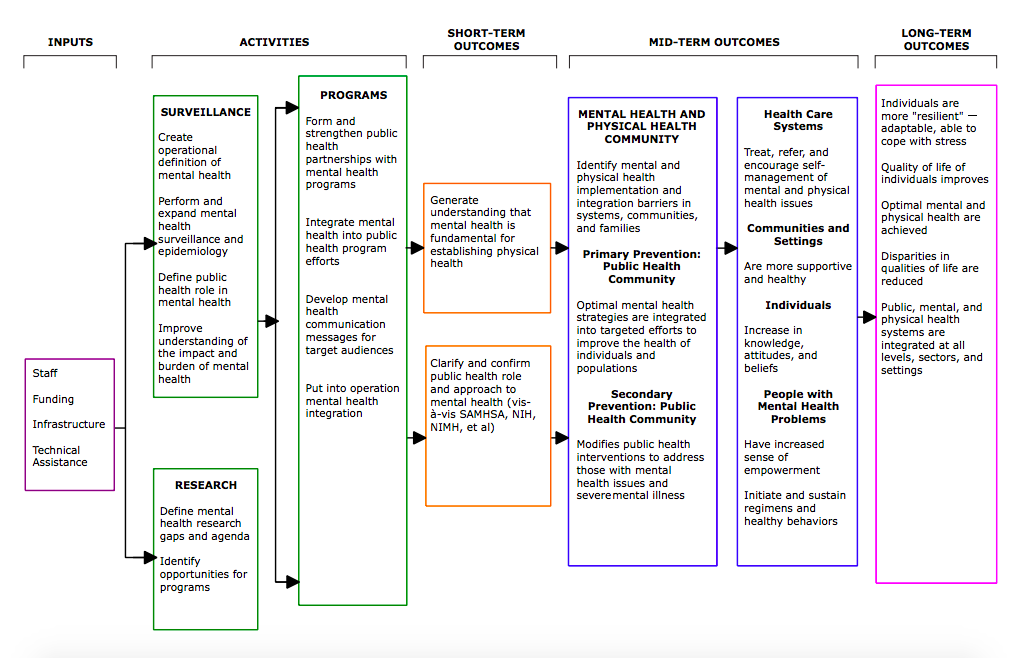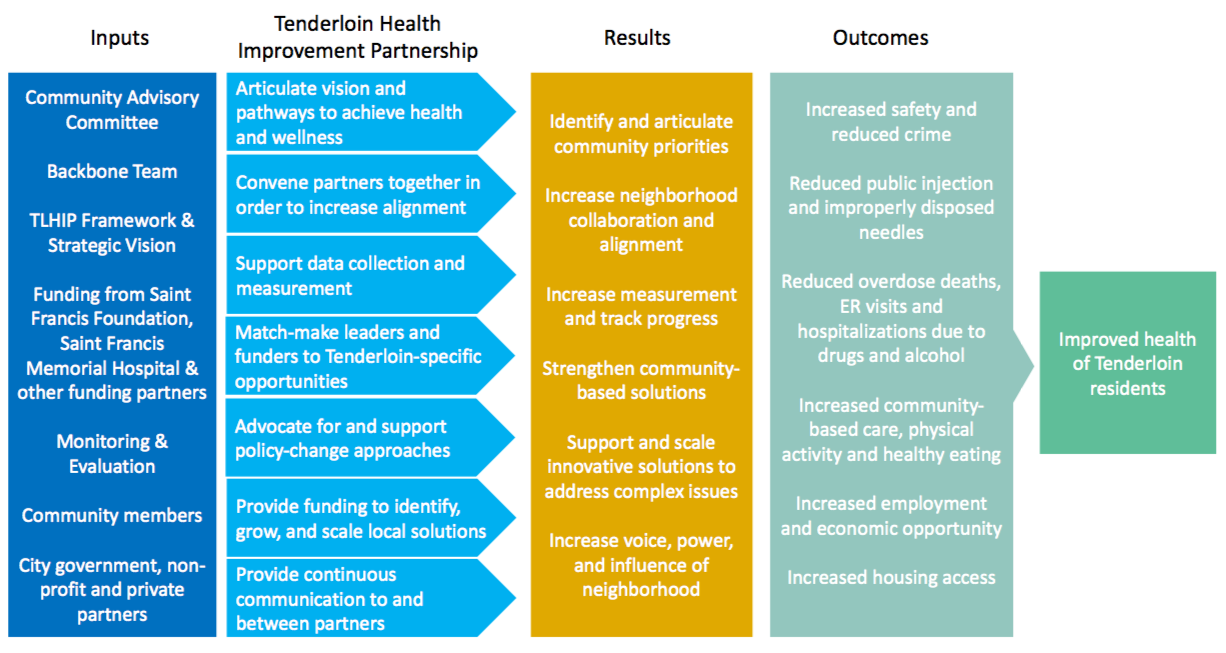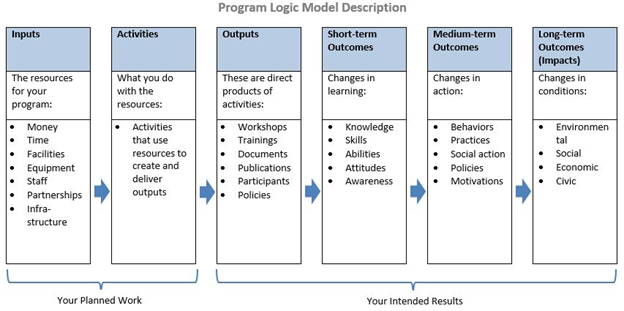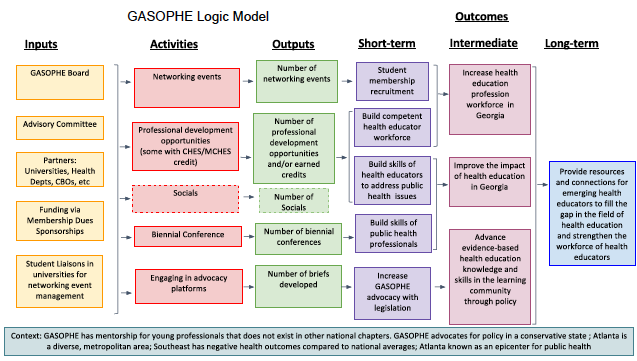Similarly a logic model can confirm that the set of existing performance measures covers key aspects all along the performance spectrum. A logic model see Figure One is defined as a graphicaltextual representation of how a program is intended to work and links outcomes with processes and the theoretical assumptions of the program.

Chapter 2 Other Models For Promoting Community Health And Development Section 1 Developing A Logic Model Or Theory Of Change Examples Community Tool Box
An inventory of what you have and what you need to operate your program A strong case for how and why your program will produce desired results A method for program management and assessment.

. It is a depiction of a program or project showing what the program or project will do and what it is to accomplish. A logic model is a plan or road map for program development and delivery and is foundational for program evaluation as it provides a critical single document to ensure your program stays on course to achieve the identified outcomes. A logic model provides a guide for current and future program planning.
A logic model is a visual representation of the assumptions and theory of action that underlie the struc - ture of an education program. Developing a logic model at the beginning of program planning. Specifically a logic model is a visual way to illustrate the resources or inputs.
They can be described as road maps that specify causal pathways and the step-by-step relationship between planned work and intended results. As such it is the basis for developing a more detailed management plan. A detailed model indicates precisely how each activity will lead to desired changes.
A Beginners Guide A logic model is an organized and visual way to display your understanding of the relationships among the resources you have to operate your program the activities you plan and the changes or results you hope to achieve. Logic models clearly and concisely show how interventions affect behavior and achieve a goal. The model can be very useful to organize planning and analysis when designing the organization and its programs or when designing outcomes-based evaluations of programs.
Logic models are useful to program administrators who are trying to implement changes in their program. A logic model can also be visually represented in a variety of ways including as a flow chart a map or a table. If a new program or grant opportunity is presented decision makers can refer to the logic model and decide if this particular opportunity is aligned with the organizations goals and objectives.
Displayed on one page. A logic model can be as broad or specific as needed depending on whether it is describing an activity program initative policy or organization19 The design and purpose of one logic model may differ from another however there are common components that all logic models share including a goal inputs. Program stakeholders can use a logic model to align a program.
Logic Models are useful. The only rule for a logic model is that it be presented on one page. Logic model serves as a road map for data collectionaiding in decisions about the key aspects of the intervention that merit evaluation and ensuring that evaluators identify indicators of all elements critical to the intervention theory.
As with many aspects of evaluation people use a variety of terms to describe logic models and their components. The logic in logic modeling Like a road map a logic model shows the route traveled or steps taken to reach a certain destination. To build understanding and clarity about your program To identify resources needed for your program To identify the sequencing of activities that should be implemented To serve as a basis for program evaluation Logic models are a good tool to help focus an evaluation to determine what to measure and what.
Creating logic models in a group brings the power of consensus and group examination of values and beliefs about change processes and program results. A logic model displays the connections between resources activities and outcomes. Logic models are sometimes referred to as road maps for the organization.
A logic model is a top-level depiction the flow of materials and processes to produce the results desired by the organization or program. Using a Logic Model to Describe a Program After you define a program problemchallengeproject a next step should include the construction of a logic model. A program can be a strategy for instruction in a classroom a training session for a group of teachers a grade-level curriculum a building-level intervention or a district- or statewide initiative.
Alternatively a broader plan. A logic model links program inputs resources and activities to program products and outcomes goals and communicates the logic or theory behind the program. During the course of implementation a logic model is used to explain track and monitor operations processes and functions.
A logic model is a relatively simple image that reflects how and why a program will work. Logic modeling offers an organized way of defining your program goals services and measurable outcomes by producing. Logic models offer a framework to help reviewers to think conceptually at various points during the review and can be a useful tool in defining study inclusion and exclusion criteria guiding the search strategy identifying relevant outcomes identifying mediating and moderating factors and communicating review findings.
If the answer is no leaders quickly move on. The basic components of a good logic model are. Draw a picture or construct columns of words that describe the program Use the picture or words to guide evaluation and work with.
Program leaders can use a logic model to prepare to gather all the resources needed to operate the program and can clearly communicate the program design to potential funders and partners. In Program Design and Planning a logic model serves as a planning tool to develop program strategy and enhance your ability to clearly explain and illustrate program concepts and approach for key stakeholders including funders. Types of information that can be included in a model How to use logic models along the whole evaluation life cycle.
Logic models can be used to design new programs or to confirm that an existing program design is still reasonable under current circumstances.

Chapter 2 Other Models For Promoting Community Health And Development Section 1 Developing A Logic Model Or Theory Of Change Examples Community Tool Box

Chapter 2 Other Models For Promoting Community Health And Development Section 1 Developing A Logic Model Or Theory Of Change Examples Community Tool Box

Chapter 2 Other Models For Promoting Community Health And Development Section 1 Developing A Logic Model Or Theory Of Change Examples Community Tool Box
0 Comments